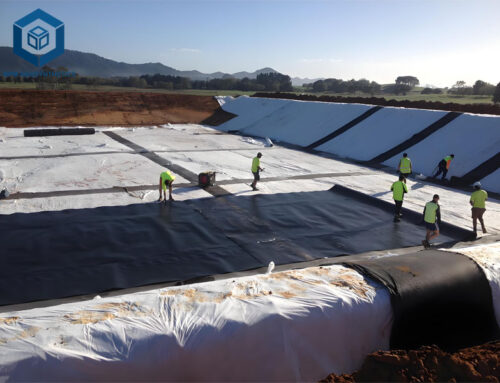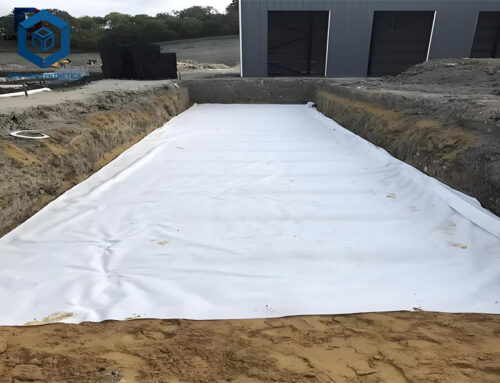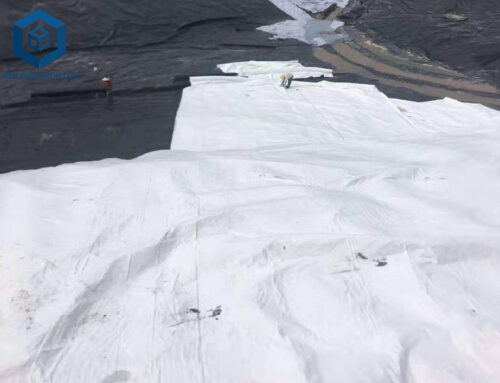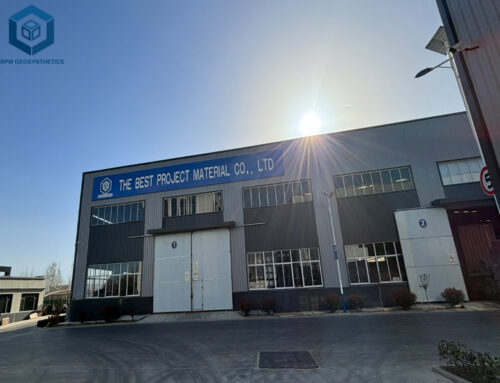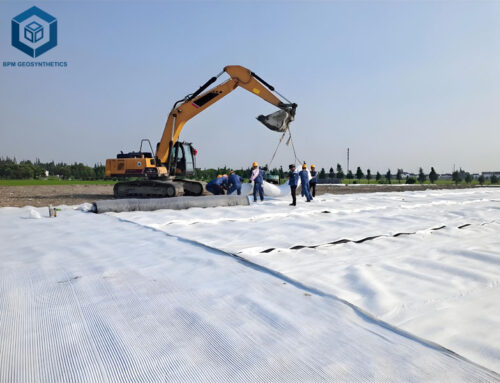What ls Geotextile In Civil Engineering? Geotextiles are synthetic materials used in civil engineering for various geotechnical and environmental applications. They are permeable fabrics made from polymeric materials, such as polyester or polypropylene. Geotextiles are commonly used to improve soil characteristics, provide stability, and control erosion in construction projects.BPM Geotextile is a leading geotextile manufacturer that has been devoted to product design and development, providing customers with one-stop service solutions.
1. What ls Geotextile In Civil Engineering – Characteristics
Geotextiles in civil engineering possess several important characteristics that make them suitable for various applications. Here are some key characteristics of geotextiles:
1.1 Strength
Geotextiles exhibit remarkable tensile strength, enabling them to withstand construction activities, soil movement, and external forces. This strength contributes to the stability and longevity of geotechnical structures.
1.2 Permeability
Geotextiles have a permeable nature, allowing water to pass through while retaining soil particles. This characteristic facilitates effective drainage, preventing water pressure buildup and promoting soil consolidation.
1.3 Filtration
Geotextiles function as filters, permitting the passage of water while preventing fine soil particles from migrating. They effectively separate different soil layers and prevent drainage system clogging, ensuring efficient water flow and structural stability.
1.4 Durability
Geotextiles are designed with exceptional resistance to harsh environmental conditions, including UV radiation, chemicals, and biological degradation. This durability ensures long-term performance and reliability.
1.5 Compatibility
Geotextiles are compatible with various soil types, aggregates, and geotechnical materials commonly used in civil engineering projects. They can be readily integrated into different construction systems and work well with other geosynthetic materials.
1.6 Lightweight
Geotextiles are lightweight, making them easy to handle and install on-site. Their lightness simplifies construction processes, reduces labor and equipment requirements, and enhances efficiency.
1.7 Environmental Benefits
Geotextiles offer environmental advantages, reducing the need for excessive excavation, minimizing soil erosion, and promoting sustainable construction practices. They contribute to eco-friendly solutions in civil engineering.
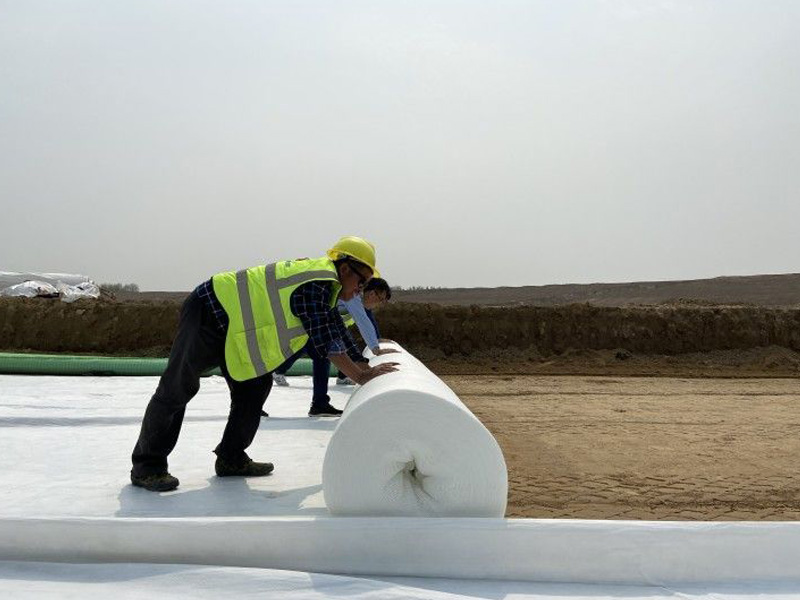
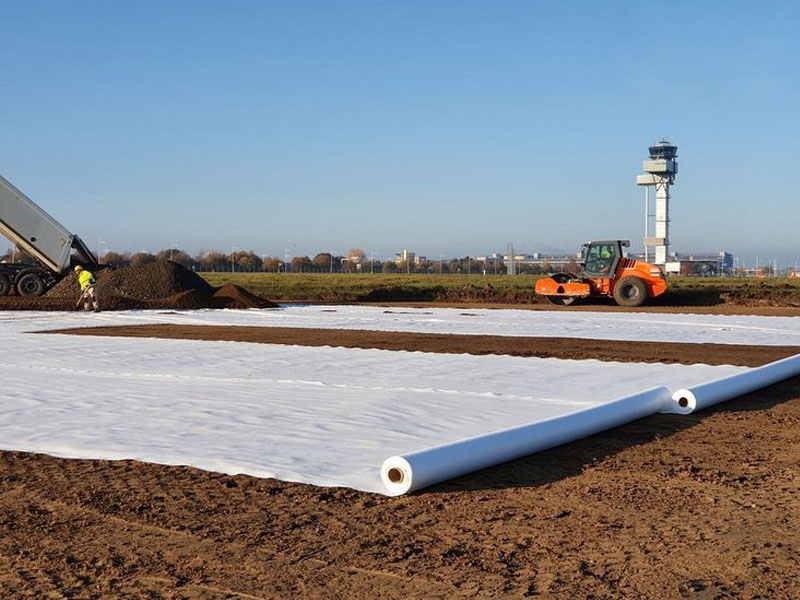
2. What ls Geotextile In Civil Engineering – Types
In civil engineering, several types of geotextiles are commonly used, each with unique properties and applications. Here are the main types of geotextiles:
2.1 Geotextile In Civil Engineering – Woven Geotextiles
Woven geotextiles are fabricated by interlacing individual yarns or fibers in a regular pattern, creating a durable and stable fabric. They possess high tensile strength and find common use in separation, reinforcement, and filtration applications.
2.2 Geotextile In Civil Engineering – Nonwoven Geotextiles
Nonwoven geotextiles are produced by randomly orienting fibers and bonding them through mechanical, thermal, or chemical processes. They exhibit excellent filtration and drainage properties and are frequently employed for erosion control, cushioning, and separation purposes.
2.3 Geotextile In Civil Engineering – Knitted Geotextiles
Knitted geotextiles are manufactured by interlocking loops of yarn using knitting machines. They offer good tensile strength and flexibility, making them suitable for applications such as soil stabilization, filtration, and erosion control.
2.4 Geotextile In Civil Engineering – Composite Geotextiles
Composite geotextiles consist of multiple layers, combining different types of geotextiles or geosynthetic materials. These combinations enhance specific properties such as filtration, drainage, and reinforcement, making them ideal for demanding applications like landfill liners, roadways, and retaining walls.
2.5 Geocomposites
Geocomposites are comprised of geotextiles or geogrids combined with other geosynthetic materials, such as geomembranes or drainage cores. These combinations offer enhanced performance and functionality, such as soil filtration, drainage, and barrier properties, making them suitable for applications like landfill caps, drainage systems, and subsurface drainage.
2.6 Geotubes
Geotubes, also known as geotextile tubes or geobags, are large tubular containers made of high-strength geotextiles. They are filled with various materials like sand or sludge and used for applications such as shoreline protection, dewatering, and sediment containment.
3. What ls Geotextile In Civil Engineering – Applications
Geotextiles have a wide range of applications in civil engineering due to their versatile nature and beneficial properties. Some common applications of geotextiles include:
3.1 Separation
Geotextiles are utilized to create a barrier between different materials, preventing their intermixing and maintaining their individual integrity. This application is commonly seen in road and railway construction to separate subgrade soil from the aggregate base.
3.2 Filtration
Geotextiles act as filters, allowing water to pass through while retaining fine soil particles. They are employed in drainage systems, erosion control measures, and retaining walls to facilitate water drainage while preventing soil migration. Geotextiles also help prevent the clogging of drainage systems.
3.3 Reinforcement
Geotextiles are used to enhance the strength and stability of soil or other geotechnical materials. By distributing loads and reducing stress concentrations, they improve the bearing capacity of foundations, embankments, and retaining walls. Geotextiles are also applied for soil reinforcement in slope stabilization and erosion control projects.
3.4 Protection
Geotextiles provide protection to underlying materials against erosion, abrasion, and mechanical damage. They are commonly used to safeguard geomembranes in landfill liners, prevent soil erosion on slopes, and protect geosynthetic clay liners in containment systems. Geotextiles can also be employed for the protection of pipelines and underground structures.
3.5 Drainage
Geotextiles with specific permeability properties serve as effective drainage materials. They facilitate the efficient flow of water through structures such as retaining walls, embankments, landfills, sports fields, and roadways. Geotextiles enhance the performance of drainage systems by preventing clogging and ensuring proper water management.
3.6 Erosion Control
Geotextiles play a vital role in erosion control measures, stabilizing soil and preventing erosion on slopes and embankments. They safeguard vulnerable areas from the detrimental effects of water flow. Geotextiles are employed in applications like shoreline protection, stabilization of riverbanks, and erosion control in vegetated soil.
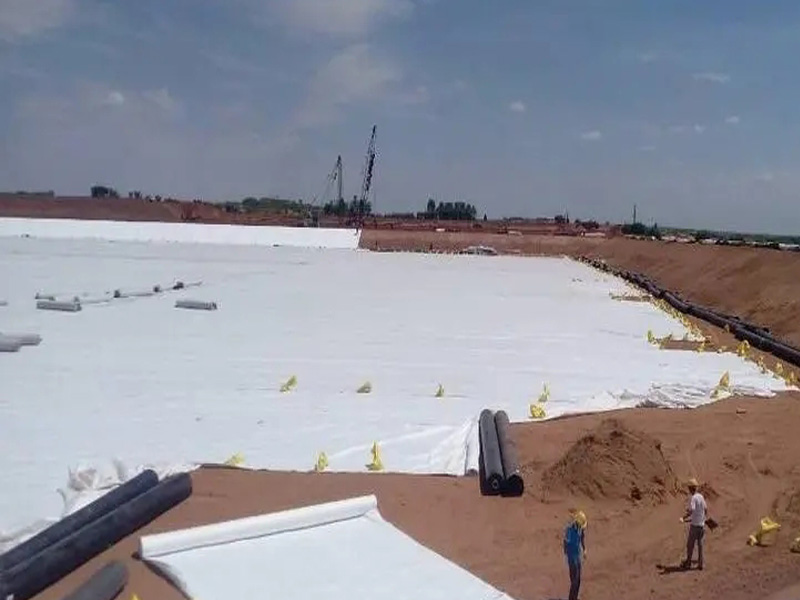
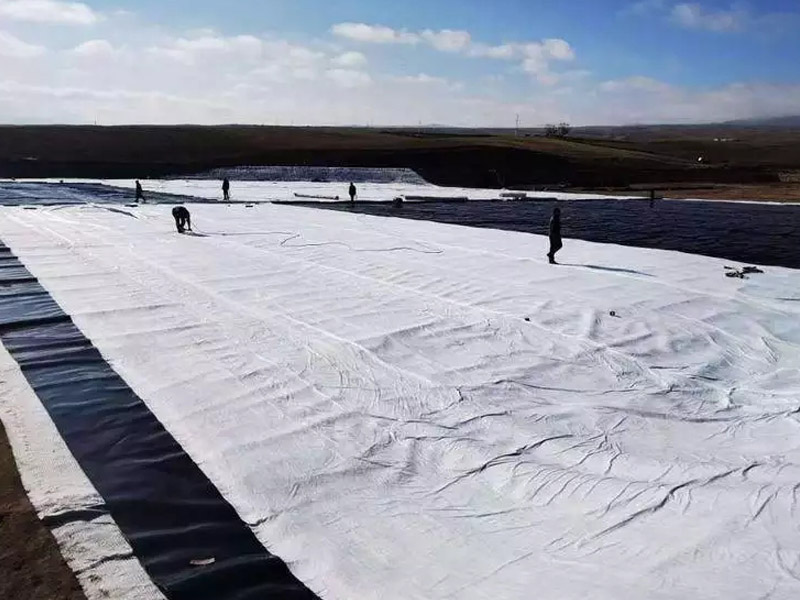
4. How To Install Geotextile In Civil Engineering?
The installation of geotextiles in civil engineering projects typically involves the following steps:
- Prepare the construction site by clearing vegetation, debris, and loose soil, and grade the surface for the desired slope and smoothness.
- Select the appropriate geotextile type and grade based on project requirements, considering factors like expected loads, soil characteristics, and desired functions.
- Unroll the geotextile along the prepared surface, ensuring it is smooth and free of wrinkles or folds. Secure it temporarily with stakes or other methods if needed.
- Align the geotextile accurately with project boundaries and contours. Overlap the edges of multiple rolls according to manufacturer guidelines for adequate coverage and continuity.
- Secure the geotextile to prevent movement during construction. Use staples, pins, nails, or sandbags at regular intervals along edges and overlaps as necessary.
- Inspect the installed geotextile for proper alignment, without significant wrinkles or gaps. Verify the secure anchoring and integrity of overlaps. Make adjustments or repairs as needed.
- Proceed with planned construction activities on top of the geotextile. The geotextile will perform functions like separation, filtration, reinforcement, or protection throughout the project’s construction and operational lifespan.
5. Summary
In general, geotextiles serve as a versatile and cost-effective solution to address soil-related challenges and enhance the performance and longevity of infrastructure projects. Geotextiles are characterized by their ability to allow water to pass through while providing functions such as separation, filtration, reinforcement, and protection. They are commonly used in applications like road and railway construction, erosion control, drainage systems, soil stabilization, environmental protection, and more. Geotextiles play a crucial role in civil engineering by improving soil behavior, preventing soil erosion, enhancing drainage efficiency, and providing long-term stability to structures.
If you have any questions, please contact us.

